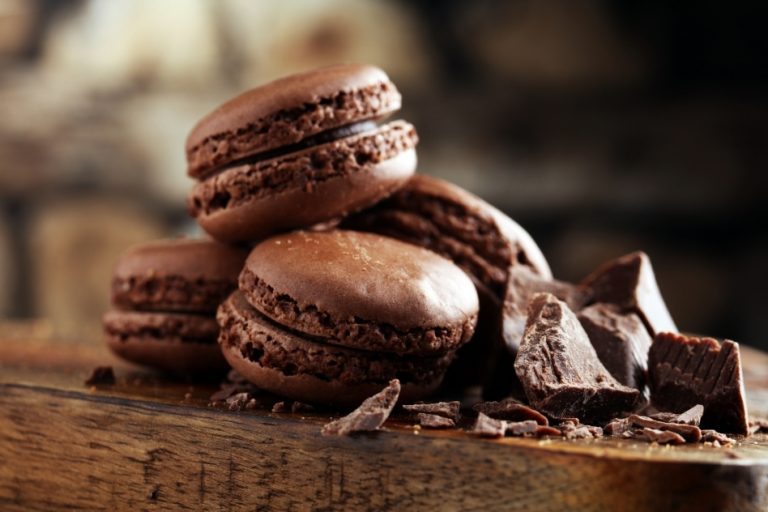Camembert vs Brie Cheese: What’s the Difference?
While equally delicious camembert cheese is different from brie, even though they might seem alike to many.
How does camembert differ from brie? Well to start, brie is much older with origins dating back to the 7th century. There are also differences in taste, texture, production and more so let’s have a more in-depth look at each one.
Camembert vs Brie
In short, Brie possesses a refined taste and smooth texture, whereas Camembert is a more rustic cheese with an earthier taste and texture. But of course, there are many more complexities to both kinds of cheese than just that.
Origins
As with many things in France, one of the biggest differences between brie and camembert is where it is produced.
While camembert comes from the region of Normandy in western France, brie comes from Ile-de-France which is the area surrounding Paris.
Taste & Smell
If you buy two cheap wheels of brie and camembert from your local grocery store, chances are you won’t notice a huge difference in the flavors of each. However, there is in fact quite a large difference between camembert and brie in both the smell and taste.
Camembert tends to have a more robust and earthy flavor, while brie boasts a milder and creamier taste with subtle sweet undertones.
And while some people classify both cheese types as “stinky cheese”, generally the smell of camembert is much stronger than that of brie as with the flavor.
Texture
Another difference you might notice is that camembert is slightly denser than brie and has a firmer texture.
Alongside its more creamy taste, the texture of brie is also much creamer than camembert because of the high-fat content.
Size and Shape
These days you can find both camembert and brie in a wide range of shapes and sizes however traditionally, camembert is sold in smaller and thicker wheels than brie, about 10 cm in diameter. Because of this smaller size, camembert is also traditionally sold as full wheels.
On the other hand, brie is made in thinner wheels with a diameter closer to 36 cm. This is why you will often see brie sold in wedges or slices instead of the whole wheel.
While both rinds are generally quite white, camembert is also a little more speckled in appearance with brie generally boasting a more clean-looking colored rind.
Production
The key reason that all of these differences between camembert and brie exist is a direct result of their individual production processes.
While the process of creating both cheeses is relatively similar, there are stronger lactic starters used in the cheese-making process for camembert than there is for brie. Additionally, cream is sometimes added to brie during the process to give it a higher fat content and produce a more buttery texture.
Camembert also undergoes a shorter aging period of around 3 weeks which contributes to its pungency, flavor, and texture. On the other hand, Brie matures for a longer duration of about 4-6 weeks which makes it more creamy.
Pairings & Recipes
Both kinds of cheese can either be served at room temperature amongst other types of cheese and charcuterie, or baked into various delicious dishes such as my meatless mushroom wellington.
Being quite similar in both texture and taste, the brie and camembert can be used interchangeably without much thought and is great paired with crusty bread, fresh fruits, and perhaps a drizzle of honey to enhance their natural richness.
However, if you are looking for more specific flavor combinations that work particularly well, brie is best paired with slightly sweet elements like honey, apples, nuts, and jams.
Alternatively, camembert is great with more savory things like olives, pickles, garlic, mustard, and chutneys.
You may also want to try some of the endless incredible recipes that feature either cheese like brie tarts, baked camembert, fondue, cheese souffle, and more.

Which Cheese is Better Baked: Brie or Camembert?
Both cheeses can be baked successfully but for more recipes, camembert is the better choice for baking.
This is because camembert melts more easily than brie and remains at a good consistency for longer while cooling. You can also expect the heat to intensify the nutty and mushroom-like flavors that come through in a wheel of camembert.
Being a little smaller than brie, camembert is also usually a more appropriate size if you want to serve individual dishes.
Do you Eat the Skin of Camembert or Brie?
Yes, you can eat the white rind of Camembert and Brie however whether or not you do depends on your own preferences.
The skin of both kinds of cheese tends to be a little richer, more earthy and has more intense flavors in general. While many people think the rind is the best part of a wheel of Brie, if you prefer a more mild taste, you may want to cut off the skin.








